HUMAN JOURNALISM NETWORK
People are the only real threat in the Ecuadorian natural reserves
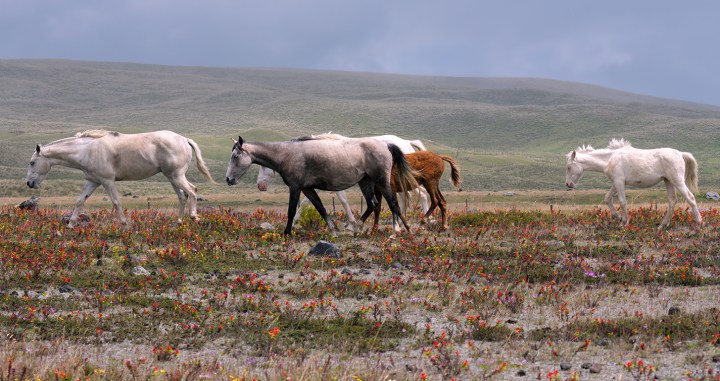
While wild animals took back the moorlands, human actions continue to jeopardise the well-being of the land
“When I first came here, I was sad to see all these irrigation ditches. They were used to drain the water so sheep and cows could survive. It was a shame not to see deer or condors,” recalls Manuel Simba. As he guides us along a trail in the Antisana Water Reserve, he tells how the landscape in this area has changed in the last decade. “It is a source of pride now to be able to see deer, Andean condors, black-faced ibises, condors and even wolves roaming the land,” he says.
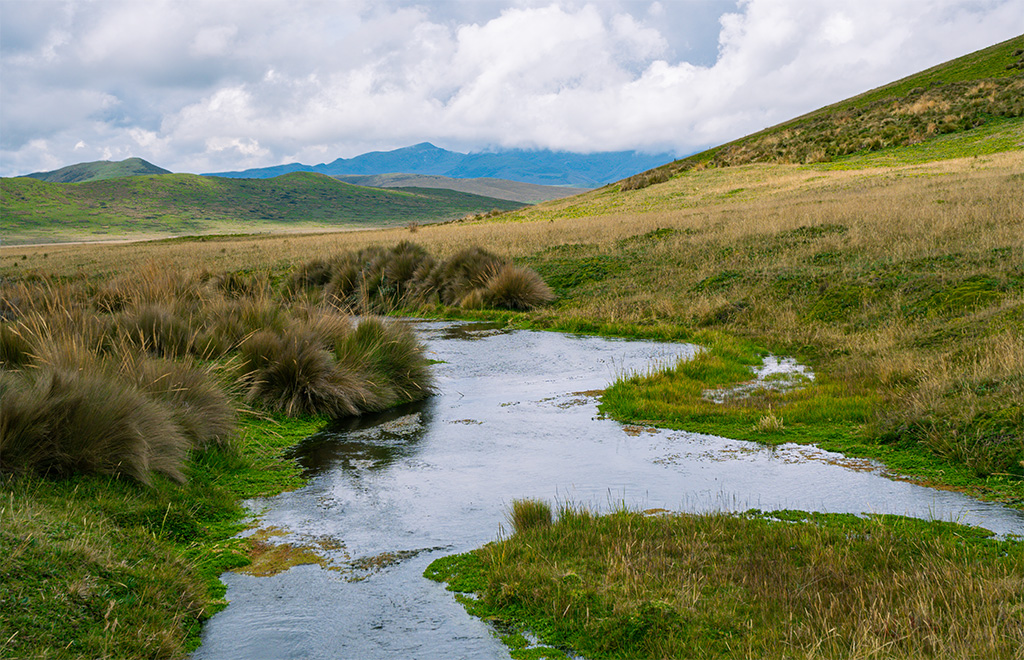
The Antisana moorland, in the northeast of Ecuador, is an important source of water for cities, such as Quito, the capital. Photo by Diego Lucero.
Simba is 58 years old, has gray hair, and a deep look under bushy eyebrows. Since 2015 his work has been to protect the moors, specifically the Antisana, between the province of Pichincha and Napo, 100 kilometres from Quito, Ecuador’s capital city. He says his love for nature arose in his childhood.
“My late father [farmer] liked to conserve his land, he didn’t like to erode it. I learned from his teachings.”
Now, as he describes how this moor is recovering, he smiles and his eyes go flat, puffs out his chest under his blue raincoat, and says they even saw bears and pumas through camera traps.
Not so long ago, says Simba, encountering these species was almost impossible, even though the Antisana Ecological Reserve is one of the most important biodiversity hotspots in the country. This area is home to 418 bird species, 73 mammals and 61 amphibians and reptiles, according to the National System of Protected Areas (SNAP).
However, the lack of protection and the abandonment of introduced fauna caused some of these animals to move and leave their habitat for at least 10 years.
“The western side [of Antisana volcano] has been one of the most destroyed moors in Ecuador,” says Robert Hofstede, a Dutch biologist with a PhD in moor ecology. For many, many years, throughout the 20th century, the Antisana was home to cattle ranching. In 2019, journalist Cristian Corral wrote that in 1977, José Delgado bought “the large estate” called Pinantura that housed the current reserve. In Delgado’s estate, there would have been about 20,000 head of cattle.
But more than 40 years later, between 2020 and 2021, the last cows living in the land were evicted. The measure was part of a soil and water conservation plan. Susana Escandón, coordinator of the Sustainable Water Conservation Areas Program of the Water Protection Fund (FONAG), says that after the cattle were removed and recovery plans began, vegetation slowly began to appear.
For centuries, Escandón explains, the area was home to thousands of cows, horses, and sheep that exerted great pressure with their hooves, compacting the ecosystem and causing soil erosion. In addition, livestock consumed its vegetation. It also displaced wild animals.
Introduced species almost wiped out this fragile ecosystem.
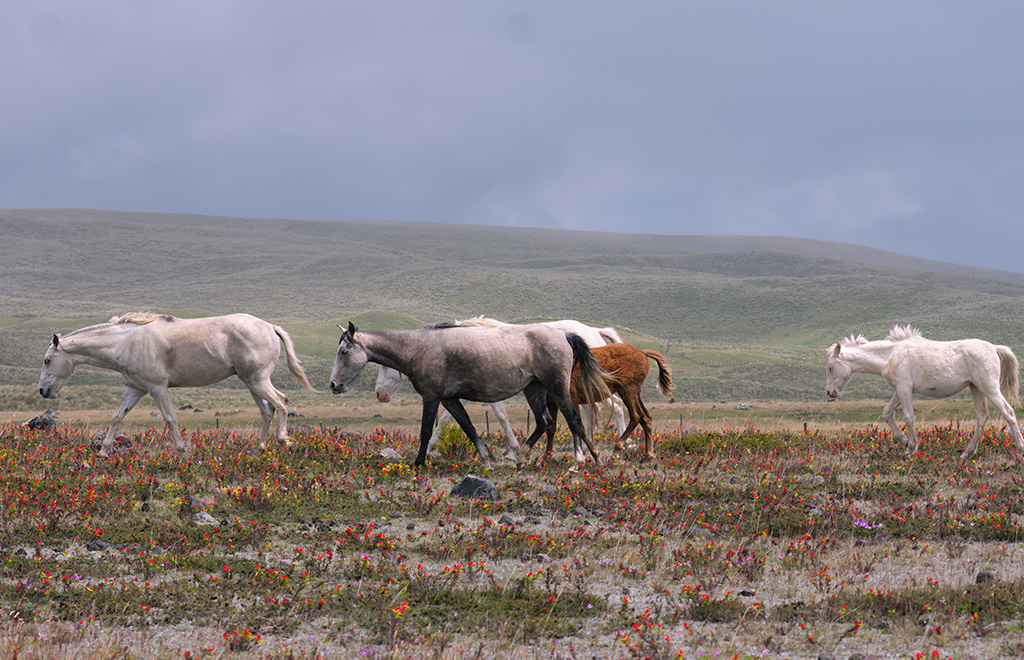
The herds of wild horses riding through Cotopaxi are not native to the National Park. Photo by Nicolás Larco.
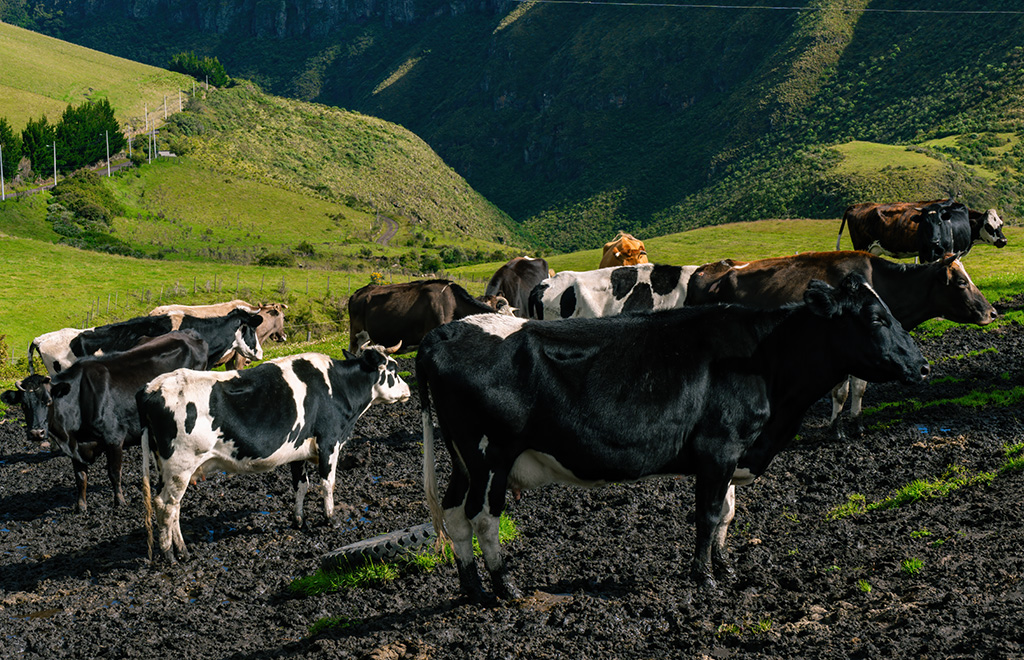
Cattle from the ranches located inside the Antisana were destroying the vegetation. Photo by Diego Lucero.
The moor is composed of mosses, grasses, and vegetation that simulates sponges. When walking on them, they sink and then slowly inflate again. Moors also store a large amount of carbon, and they are important sources of water: the Antisana reservoir, for example, supplies water to a quarter of Quito’s population. That is about 650,000 inhabitants, according to the Ministry of Environment.
Healthy vegetation is key to achieving ecosystemic balance, that is, harmony and stability between living beings and the place where they live. Microorganisms, insects, amphibians, small animals such as rodents, and medium-sized animals such as white-tailed deer, wolves, and tapirs interact in the vegetation. There are also large animals such as pumas and spectacled bears, and scavengers such as the condor, the hawk, or the curiquingue.
But every time humans introduce domestic animals, problems arise. The food system is altered in an environment where species are meant to share water and sunlight.
If one of these spaces is altered, there are imbalances. A chain of action and reaction is created. If vegetation disappears, small animals disappear, then medium-sized animals disappear, and so on.
The alteration caused by humans in the Antisana did not extinguish everything, but it did generate new dynamics between introduced and wild animals.
Since the introduced animals had been in the moor for more than 100 years, the wild species became used to their presence. Even the wild predators fed on the introduced animals. Susana Escandón, from FONAG, explains that before extracting the cattle, they feared the impact; they wondered if the predators and scavengers would get used to eating wild animals again, or if they would try to enter the communities’ areas in search of the cattle.
The technicians of the project implemented heavily between 2020 and 2021 also feared that predators like the puma or wolf and scavengers like the condor would not return to eating deer or rabbits, their original diet.
But this did not happen. Between those years, deer, foxes, bears, pumas and condors gradually began to return.
These animals have not only been portrayed by tourists who are happy to be nearby. When the Antisana and Cotopaxi, both protected areas, close their doors to visitors, the animals take the opportunity to wander around. Foundations such as Andean Condor have set up camera traps where pumas, tapirs, rabbits, male deer, and other animals that visit the moorlands of these two volcanoes can be seen. Fabricio Narváez, executive director of the Andean Condor Foundation, says that in the systematic monitoring of camera traps, they have been able to identify up to 17 species that roam the moors.
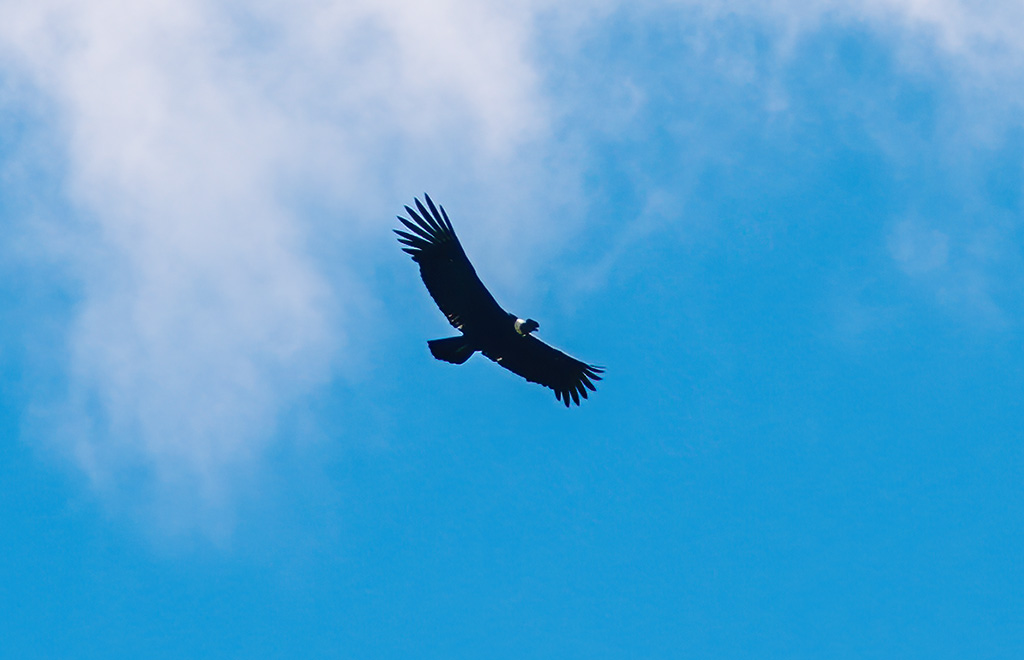
The condor is a scavenger bird that flies over the moorlands in search of food. Photo by Diego Lucero
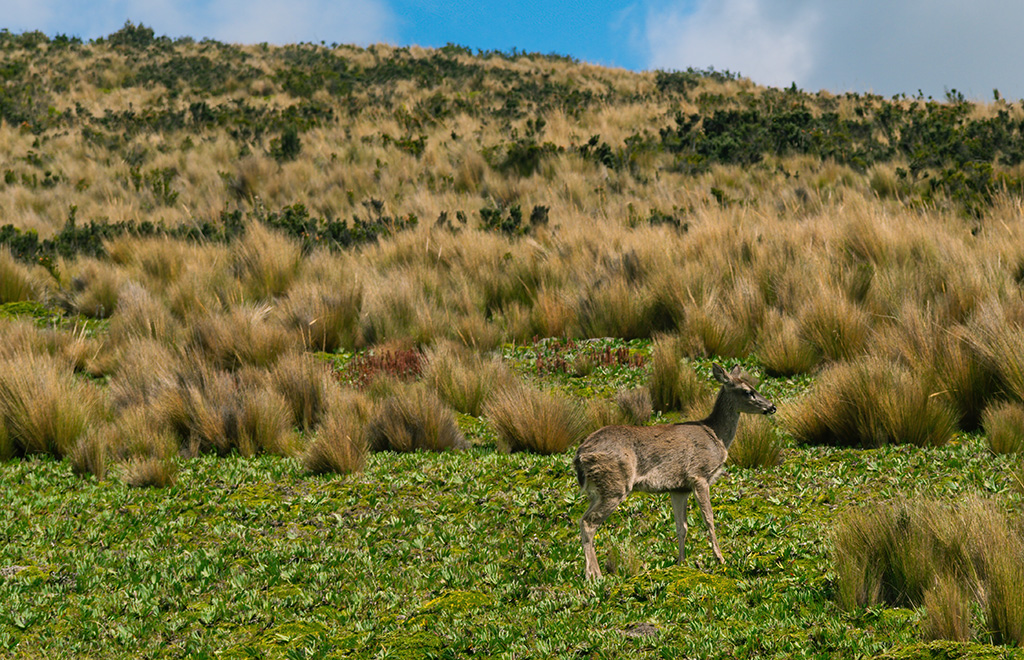
Deers don’t run away from people like they used to. Photo by Diego Lucero.
Removing the cattle was not the only effort to bring back the wild animals. Increased hunting control by park rangers and park guards, and conservation, restoration, monitoring, and constant tracking of wild animals by foundations such as Andean Condor, Jocotoco, and Andean Bear, also contributed to this recovery.
The same happened in the Cotopaxi National Park: the vegetation was destroyed and wildlife species were almost absent. But the invaders here were not cows but horses. The herds that were initially part of the estates, and were later donated to the Park as a tourist attraction, kept the area with little vegetation. “They ate a lot and somehow competed [for food] with the deer,” says Robert Hofstede.
Landowners and visitors to Cotopaxi became accustomed to seeing the wild horses galloping through the park. They had been around for so long that when FONAG began, in 2016, to remove all the introduced animals from Cotopaxi, Hofstede recounts that one of the park rangers said they should warn people in nearby communities because he thought the horses had owners.
Overnight, half of the horses were left, recalls the biologist. “Many of the horses that were in the park belonged to private owners who kept them there and occasionally saw them,” he says. In Cotopaxi, it has not yet been possible to remove all the horses. However, with the significant decrease, the number of deer increased and, with them, so did the wolves.
But once all the efforts to bring the wild animals back worked, the technicians and foundations encountered new problems: they could not fully foresee how people would react to the return of the wild animals.
The ecosystem recovery program, in a way, also caused humans to have more contact with these species. In the Antisana, the deer are no longer frightened or run away when they see a person. They stare and allow themselves to be photographed. Even with the noise of cars, they hardly even flinch; they barely raise their heads.
Biologist Robert Hofstede says this has both a positive and a negative side.
By getting used to humans, as is happening in Cotopaxi and the Antisana, the animals no longer see them as a threat. This is good because they do not run away and feel the confidence to stay in place.
The downside, Hofstede explains, is that they see humans as a source of food. This phenomenon has been happening in Cotopaxi for about three years. In 2021, when I visited this National Park, a small pack of three wolves seemed to be waiting on the trail leading to the volcano for people to give them food. When I returned to this place in June 2023 one of the park workers told me that now there was also a wolf that is usually in the parking area and another in a nearby lagoon.
According to Hofstede, this behaviour is unnatural for wolves, which, by nature, are elusive and hunt in small packs. What happens in Cotopaxi, he says, is an “animal’s opportunism”. That is, the wolf will prefer to wait for a car that it knows will give it food before hunting a rabbit. This behaviour, he adds, is collateral damage caused by increased contact with humans, mainly due to uncontrolled tourism.
Tourism allows an interaction between the visitor and the animal that, stresses the biologist, should not exist.
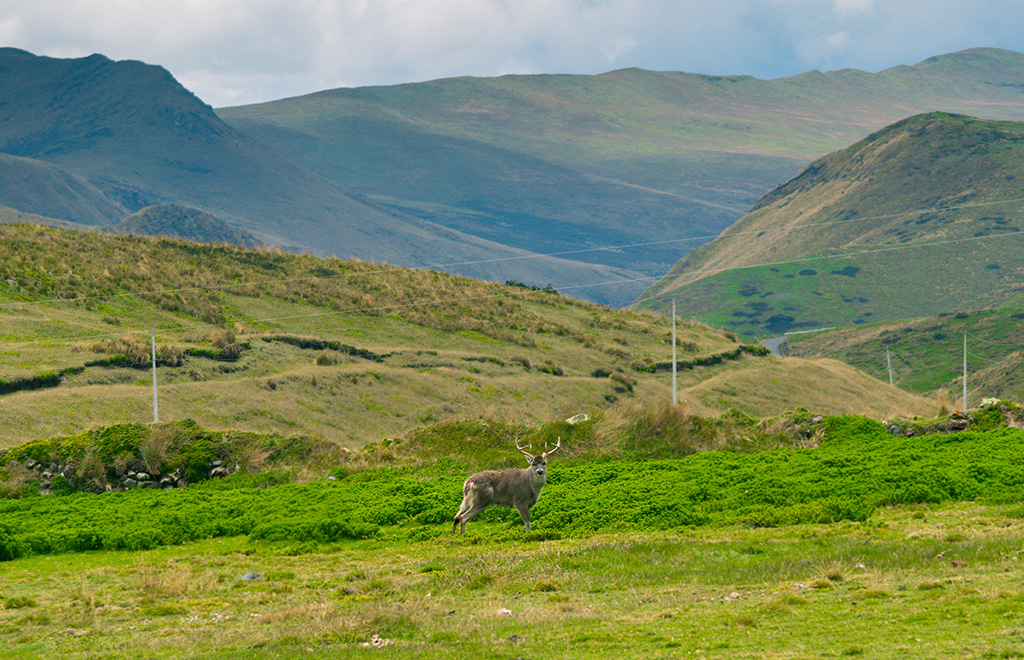
Not all animals allow themselves to be seen by humans. Deer, rabbits, and pumas have been captured by camera traps placed in both moors. Photo courtesy of the Andean Condor Foundation.
A wolf begging for food in the Cotopaxi parking lot may be conspicuous to many. But Hofstede explains that this is a problem, since, if animals lose their natural behavior and then need to survive in the wild, “they will no longer know how to hunt.” He also mentions that if one generation “learned that early, there may come a next generation that is no longer so tame, but aggressive” if they are not given food.
In other words, a seemingly harmless decision such as approaching and taking a picture near the animal can change its natural behavior and mark it for life. Throughout 2022 when the park rangers noticed that it was no longer just one wolf asking for food but five, they started the campaign “If alive you want to see me. Don’t feed me” campaign, which sought to raise awareness among visitors and make the little gang less accustomed to waiting for food.
Beyond grazing and express food
Cattle, horses and the harmful interaction between humans and animals are not the only threats facing the Cotopaxi and the Antisana species.
The first threat is agriculture. Farmers destroy the peatlands by preparing the soils to grow various food crops.
Peatlands are natural reservoirs that, in addition to water, store organic matter — plant debris that degrades and releases nutrients in the process. This organic matter prevents natural gases from escaping into the atmosphere. The farmers, to prepare the land, make canals near the peat bogs to drain the water and remove the soil. This organic matter is then used as fertilizer.
However, this is not the only way in which agriculture affects the fragile ecosystem. Another way to prepare the land is to burn the grasslands and leave the soil ready for planting. After planting for two or three seasons, the farmers plow the land and leave it ready to introduce cattle.
All this damage to the soil causes erosion and takes away an important place for the small fauna, which is the base of the ecological pyramid, explains Segundo Chimbolema, a researcher at the Biosphere Institute of the Universidad San Francisco de Quito (USFQ).
Another threat is feral dogs. Susana Escandón explains that they are called feral because their ancestors were abandoned by humans and were left to roam the protected areas. This changed their behavior from domestic to wild. These dogs usually gather in packs to survive and hunt in the same way.
When in contact with wild animals, these dogs can infect them with diseases such as rabies. Cristian Cóndor, administrator in charge of Cotopaxi National Park, says that they already had a case of a wolf with rabies and took a long time to treat it. After its reintroduction to the moor, they feared that others would become infected, but so far they have not registered another case.
Many of these dogs enter the estates and farms of nearby communities to eat the chickens. The farmers, to stop them, poison them. When the scavenger birds find the dog’s corpse, they eat it. And they get poisoned too. A direct victim of this has been the Andean condor, an emblematic bird of Ecuador whose populations have been in decline for years.
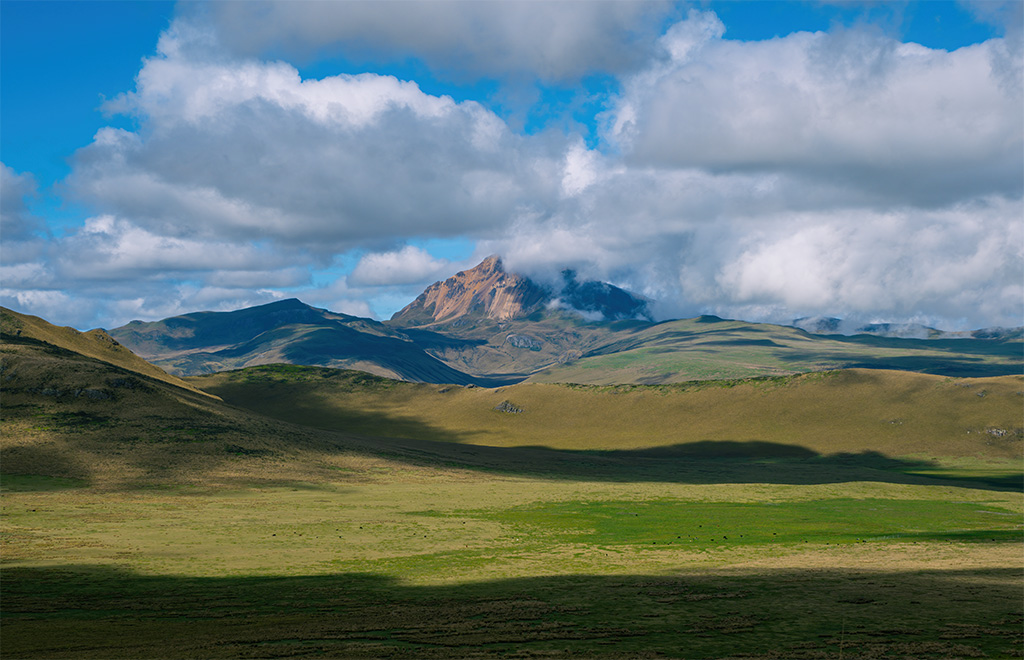
The large number of surrounding farms affected the moor of the Cotopaxi volcano. The western side of the Antisana volcano has been one of the most destroyed moors in Ecuador. Photograph by Diego Lucero.
Fabricio Narváez, who specializes in researching condors, explains that the main causes of their extinction are poisoning and hunting. He also says that between December 2018 and 2019, twenty Andean condors died from poisoning “that were not even aimed at the condor but at dog control.”
For the control of dogs, Narváez says that from the Foundation they have made sterilization campaigns. But that is just one line in the big problem.
Cristian Cóndor says that in this area they have implemented trap cages to catch these dogs. They capture them and send them to the homes of the municipality of Cotopaxi so that they can redomesticate them if they are likely to do so. But if they are feral, the decision on what will happen to these animals is made directly by the municipality.
The moorlands have never been exempt from hunting. Manuel Simba says that in the past there were “poachers” and that they have had to “fight quite a bit against this because they came to hunt deer and rabbits”. This problem worsened during the pandemic because it coincided with a phenomenon that occurs with rabbits.
Susana Escandón explains that rabbits have a season of between three and four years where there is a “reproduction curve” in which they appear in large numbers. But then they get a disease that kills these small mammals and they disappear. Then another three years go by and they reappear.
Escandón explains that they think that this disease could have been one “that they got many years ago because of the urban-rural interaction” but they do not know for sure what is happening. Today they are studying this phenomenon. During the peak rabbit season is when the hunting of these small animals skyrockets.
During the pandemic, rabbits appeared in large numbers in the Antisana and Cotopaxi highlands. The hunting of these small animals, says Escandón, is “very linked to rural areas where people go out with their horses and dogs to chase them, hunt more than 100 rabbits and take them with them”.
Manuel Simba recalls that throughout the pandemic it was “very hard” in the Antisana. From FINAG only two park rangers remained: he and his partner Isidro. “People from neighboring communities took advantage,” he says, referring to the increase in hunting.
Simba comments that “every day we found four or five groups hunting rabbits” and what they did was to give them a “little talk about the subject”, since as guards they could not keep them. He also recalls that they could not call the police and that they were alone.
The same thing happened in Cotopaxi
Víctor Cumbajín, a park ranger for 17 years in Cotopaxi National Park, explains that during the rabbit season, “people came in with dogs to hunt them” instead of setting fire to the grasslands to flush out the rabbits as they used to do. They did this “so as not to alert us, because if we already see a smoke, we already know they are hunting”. Like Manuel, he only had the support of another colleague to protect the 10,000 hectares that FONAG has in Cotopaxi.
When the rabbits disappear, as a natural consequence, so does the hunting of these animals.
Currently, in comparison to previous years when control was not so strict, Cumbajín says that hunting has been decreasing, but that it still exists in small quantities.
Cristian Cóndor explains that hunting is now very sporadic, but “with the number of hectares, it is very difficult to specify how many. The park covers 32,271 hectares and has only 19 park guards, who not only have to protect the areas but also do everything, such as masonry, carpentry, tourism, and more,” says the administrator. In other words, the lack of personnel is also a problem that affects the animals.
And human alterations to the moorlands also impact the wildlife that lives there. The animals, not having a voice, have to depend on human actions to survive. But attempts to preserve them do not seem to be enough. Ultimately, the protection of nature and the wild species that inhabit it falls into the hands of those who destroy it.DM
This story was originally published in GK (Ecuador) and is republished as part of the Human Journalism Network program, supported by the ICFJ, International Center for Journalists.























 Become an Insider
Become an Insider
Comments - Please login in order to comment.